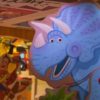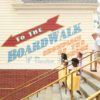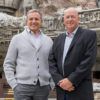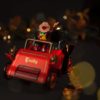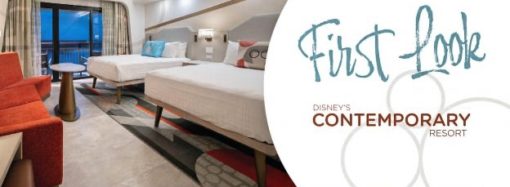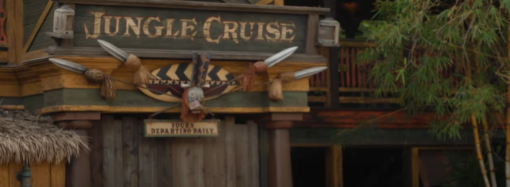Introduction
From Mickey Mouse, Donald Duck and the rest of the Fab Five to Disney’s True Life Adventures, animals have always been a part of The Walt Disney Company. Walt even wanted to have live animals at Disneyland’s Jungle Cruise attraction, but because of the logistics and the nature of the animals, that idea was scrapped. It wasn’t until 1984, when Michael Eisner became CEO of the Walt Disney Company, that the idea for an animal-themed park became a reality.
In his book, Disney’s Animal Kingdom: An Unofficial History, Chuck Schmidt writes, “During opening day ceremonies, Roy E. Disney said, ‘They [Walt & Roy] would have been thrilled with what has been created here and would have thought it a wonderfully appropriate addition to their company.’”
Ground broke on Disney’s Animal Kingdom theme park in 1990 and eight years later it officially opened to the public. As with all Disney Parks, accommodations close to the new park were sure to follow.
Opening on April 16, 2001, Disney’s Animal Kingdom Lodge — today known as Jambo House — is one of the resort’s most spectacular and most authentic-feeling hotels. The resort recreates the feel of an African reserve lodge. The architecture, interior design, and landscaping create one of the most immersive Disney resort experiences for guests.
Disney’s Animal Kingdom Lodge is described as “a luxury resort experience that transports the visitor into the magic and mystery of Africa. Guests become part of ‘the Journey’… The resort allows the guest to become part of the ‘Peaceable Kingdom,’ where humans and wild creatures participate in the ultimate resort experience as both actors and spectators of each other.”
Schmidt writes, “Even though Animal Kingdom Lodge is a hotel, for us, it’s a show scene,’ said Joe Rohde. The resort’s thatched roofs, he added, ‘establish a sense of actually being in Africa.’”
The Architects

Peter Dominick, who previously led the design team for Disney’s Wilderness Lodge Resort at Walt Disney World and Disney’s Grand Californian Hotel & Spa at Disneyland, was the Design Principal of Disney’s Animal Kingdom Lodge. Michael Eisner, who was still the Chairman and CEO of The Walt Disney Company, tended to select a firm and negotiate from there. Since Eisner was already familiar with Dominick and the Urban Design Group (now 4240 Architecture), he gave them this job as well.
“He [Dominick] was selected for his talent, of course,” writes Schmidt, “but as Marty Sklar explained, also because of his close association with Joe Rohde.”
“Peter’s strong passion for nature and the arts gave him a unique ability to integrate these two elements in his designs. The resort features some of his signature design elements including a grand lobby and a serene stream flowing throughout,” said Leslie Tate Boles, Curator, Walt Disney Imagineering. “Like most creative entities, the resort was a collaboration of Dominick’s design, combined with the creative geniuses of the Walt Disney Imagineering resorts team, lead at that time by architect Wing Chao. Peter provided input throughout the process from his original overall design to the final resort.”

During the process, Eisner was present for the presentations and meetings, but it was Joe Rohde — Executive Designer and Vice President, Creative at Walt Disney Imagineering — who was intimately involved from Disney. “Rohde played a huge role in design direction, creative direction, and storytelling,” said Randy Johnson, Dominick’s Partner at 4240 Architecture who also served as a Principal for the Animal Kingdom Lodge. “During the development of the project [for the Animal Kingdom Lodge], Joe, as Disney’s project manager, participated in extensive research alongside us.”
The Planning

Disney is notorious for their attention to detail, and the Animal Kingdom Lodge is no exception. Walt once said they were blessed with size at Walt Disney World, but what they were also blessed with — was flat land. Animal Kingdom Lodge sits on 75 acres and is next to a 400-acre wetland.
According to 4240 Architecture, “The design challenge was to translate the African mythic traditions of animal and landscape into a built form and an understandable art, to create the effect of Africa’s topography and log views on a relatively flat site, to meet building code requirements while honoring the authenticity of jungle materials, to separate guests and wildlife for the security and safety of both, and to create an intimate eco-tourism experience at a vacation venue on a commercial scale.”
In order to achieve their mission statement, extensive research went into the planning of the resort. Johnson said there was “tons” of research. “The design’s authenticity is a result of five years of extensive research and study,” continues Johnson. “On top of extensive research, the 4240 Architecture and Disney teams toured several places in South Africa as part of their research, specifically visiting safari game parks. Team members were inspired by native architecture, culture, arts, and storytelling of the places they visited.”

The planning and design of the lodge took place from 1997-98 and construction lasted approximately two and a half years. The backstory on the Animal Kingdom Lodge Resort is pretty straightforward. “We worked closely with Joe Rohde from the very beginning,” said Randy Johnson. “So the story behind the hotel developed organically as he [Rohde] collaborated with the team during the design process.”
The Design
The design of the Animal Kingdom Lodge was influenced by one guiding principal — the design team wanted guests to become part of “the journey.” “We wanted guests to experience a magical and slightly mysterious safari expedition into the unexpected and the profound,” says Johnson. “We wanted to create an authentic experience, textiles, art, and artifacts that would be seen during their ‘safari’ trip.”
To create this authentic safari trip, the team used as many native materials as possible in the lodge; however, contemporary buildings have strict building codes, therefore modern materials had to be incorporated into the construction.

Perhaps the best example of creating native materials from modern, regulation-approved materials is the lodge’s thatched room. “It was important to the team to create a thatched roof,” said Johnson, “but a real thatched roof is obviously not an appropriate solution. Therefore, a custom thatched roof material was developed through working directly with a fabricator to formulate the faux thatch. The result is an amazingly real looking, yet non-combustible thatched substitute that was eventually used on the Vacation Club as well.”
Walking into the Animal Kingdom Lodge guests are immediately struck by the grandeur of the lobby. The lobby, which is actually the third floor of a six-story building, combines many sources of inspiration including Zulu shield-inspired light fixtures and vine-like metal railings and window details. Opposite the entrance is a large, floor to almost ceiling wall of windows looking out on to the savannah.

To create a feeling of separation from the lobby to the outside, the architects created a split staircase descending to a foyer. This decent creates a natural hierarchy and transition from the overlook to the savannah down to the close-up viewing area for the animals. From the lobby, this staircase and balcony bring the focus from the inside to the outside. By doing this, the architects were able to frame the geography of the African plains in such a way that it created a unique experience from the lobby. “The vine details on the window break down the rigidity of the glass,” said Johnson, “thereby giving the guests a feeling as if they are peeking through the vines to the animals in the savannah.”
The Florida topography was a help and a hindrance for the designers. The flat terrain and natural wetlands generally contributed greatly to the ambiance of the Animal Kingdom Lodge. “The flat Florida land perfectly mimicked the African savannahs, giving an authenticity in the surrounding landscape,” said Johnson. “However, with a hotel of this size, creating an experience that matches that scale was the challenge. We had to figure out how to create an arrival and guest experience that disguises the immense size of the Lodge. To scale the project to the right size, artificial elevation changes were built in to the landscape, thereby making the hotel feel like it was truly emerging from the flatlands of the savannah. As guests make their way to their destination, they are immersed in an intimate African landscape that set stage for the ‘safari,’ allowing glimpses of the building on approach and then finally revealing the main building. These elevation changes also help separate the humans from the animals in an organic matter thereby allowing guests to overlook the animal corrals.”
The Shape of Disney’s Animal Kingdom Lodge

There are numerous design aspects that are unique to Disney’s Animal Kingdom Lodge; one of the most interesting is its U-shaped design. “The team used this design based on the arrangements of Zulu communities in which building(s) encircle a central area which is used to keep livestock,” said Johnson. “This design is called a Krall. It’s a horseshoe format that allows the building(s) to act as a fence while giving guests excellent views on to the savannah. Additionally, the orientation maximizes the sunlight on the site — shining in to the Krall in the morning, to the pool during the day, and during the evening — in to the lounge. Although the team researched many areas and cultures their primary focus was in southern areas and the game parks of the savannah.”
“The proportions of the resort’s lobby are carefully organized around a double cube with a bridge that provides circulation between the resort’s two wings,” said Johnson. “This arrangement allows guests to enter and exit the vastness of the lobby at multiple points. The ‘knuckles,’ where the bridges converge, form a series of small, two-story glass atriums that let in natural light and provide quiet views out to the savannah. Additionally, they each serve as a showcase for various aspects of African culture, including art, tools, and tribal costumes.”

A unique form of construction was used to construct the lodge. “Concrete ‘tunnel form’ construction was selected,” said Johnson. “It’s a method that easily accommodates the recreation of native building forms. When possible, traditional materials such as reeds were used, in other areas the materials or textures were recreated with code-compliant modern materials.”

The architects used, whenever possible, natural materials and patterns to mimic native African uses. For example, the lobby ceiling uses reeds to re-create the textures and patterns from natural materials of the area and the mud-style fireplaces reflect the traditional materials of fireplaces in the desert regions.
References:
Johnson, R. (2017, April 18) Email Interview
Tate Boles, L. (2018, July 24) Email Interview
Chuck Schmidt, Disney’s Animal Kingdom: An Unofficial History, (Theme Park Press, 2018) p.113-114, 115
The article originally appeard on WDWInfo.com on 2 August 2018. This article has been reprinted with permission from the author.

